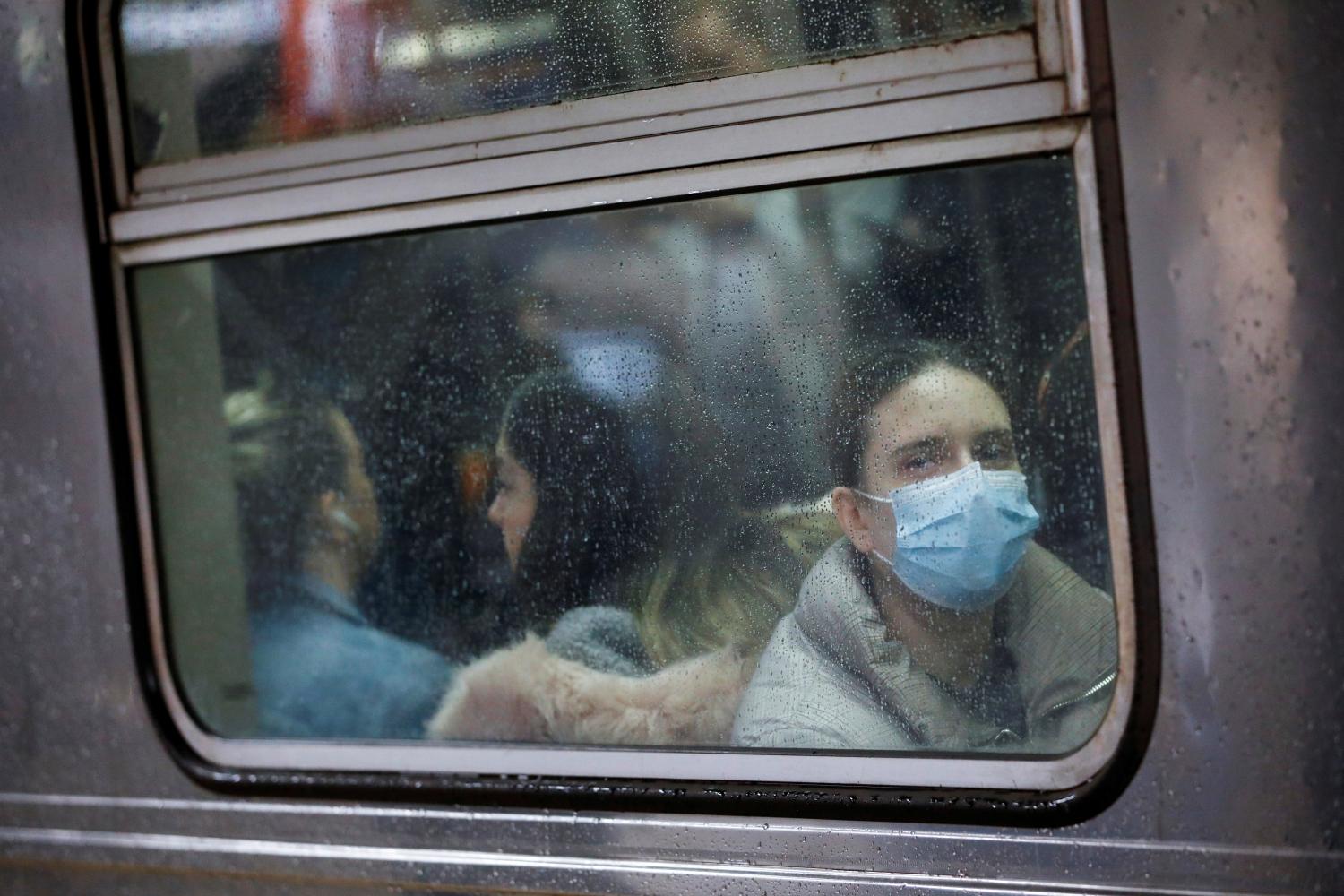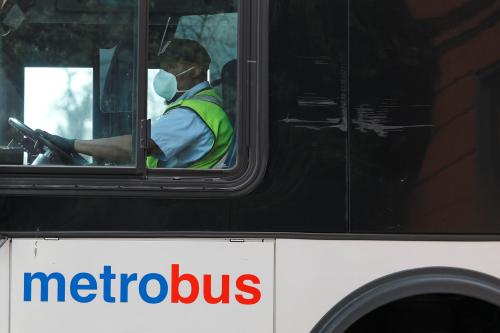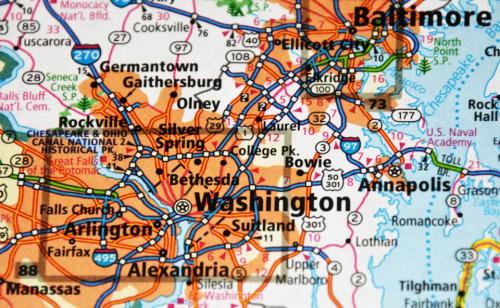And why “relief” and “bailout” are two very different things
There is a glaring shortfall in the ongoing negotiations between Congress and the White House to design the next emergency relief package to stave off a coronavirus-triggered economic crisis: Relief to close the massive resource gap confronting state and local governments as they tackle safety and recovery.
Over the weekend, Senate Republicans rejected inclusion of a “state stabilization” fund in their relief proposal. Instead, their latest bill expands state-provided unemployment insurance and makes state and local governments eligible for loans under a new $500 billion “economic stabilization” fund intended for major industries. With an outcry mounting from mayors and governors, House Democrats are developing a competing proposal which restores such a state fund, yet it’s unclear if that proposal will proceed if the Senate version passes.
To be sure, expanding unemployment insurance and providing other direct aid for workers and small businesses is vital. Yet relegating state and local governments to a newly created “bailout” program—a mechanism already under attack as a potential election-year slush fund to reward some states or industries over others—ignores the justification for massive and fairly allocated federal fiscal relief.
What’s more, it would add needless bureaucratic hurdles and delays, bypassing the proven channels through which large sums of federal aid have gone to states and local communities in prior emergencies.
In the past 15 years, for instance, New Orleans has grappled with multiple catastrophes: Hurricane Katrina, an oil spill, the Great Recession. Now it is at the epicenter of the COVID-19 outbreak in the state of Louisiana, with 20 deaths and over 450 of the state’s 837 known cases as of March 23.
While the current crisis is unique in its origin and scale, Louisiana and other states know what should come next. Under America’s well-established disaster relief and recovery framework, state and local governments work under federal coordination to source and allocate life-saving medical supplies and equipment, get aid directly to families and small businesses, and meet a wide array of other emergency needs as they evolve.
But the federal government has not yet treated the health-cum-economic crisis faced by New Orleans and countless other cities and states as a disaster that demands immediate fiscal relief for these governments on the front lines.
Further, the White House’s declaration of a national emergency on March 13 focused narrowly on granting greater flexibility to the Department of Health and Human Services, framing the crisis merely as a public health emergency. It is clearly that—but already much more. COVID-19 is a sweeping crisis that demands what disaster management experts call a “whole-of-government and whole-of-society” response.
As the U.S. Conference of Mayors spelled out in a letter to Congressional leaders on March 18, local governments large and small are already dealing with a perfect storm. State budgets are also threatened, as mass containment measures decimate tax revenues just as service demands are spiking. State and local governments need to buy more personal protective equipment for health care workers and first responders, cover the costs of child care for emergency workers, and sustain essential operations such as public safety and sanitation. Thankfully, as our Brookings colleagues have documented, many states came into this crisis with healthy rainy-day reserves. But without fast, large-scale federal aid, local and state governments will nonetheless be forced to cut services and lay off staff when communities need them most.
Where federal coordination and financial support are lacking, state and local governments are leading. States such as California and Maryland, and cities including Philadelphia and Atlanta, are passing ordinances to help people stay in their homes by stemming evictions, foreclosures, and utility turnoffs. New York is expanding eligibility for unemployment insurance and providing paid leave to impacted workers. Seattle, Birmingham, and Indianapolis are creating funds to support small businesses.
With no time to waste, Congress and the White House should immediately take the following two steps to effectively and efficiently resource a whole-of-government response:
First, the president should expand the national emergency declaration to reflect the extraordinarily broad dimensions of this crisis and provide clear guidance to states on how to tap the roughly $42 billion already appropriated to the Federal Emergency Management Agency’s Disaster Relief Fund. On Saturday, FEMA declared New York a “major disaster” area, enabling the state to finally tap DRF funds. Now, the White House should direct FEMA to give the same proactive guidance to all states, including those where conditions are not yet as acute as New York’s, and back states up with a stronger interagency structure versus the lack of coordination they are now experiencing.
Second, because needs will vary across states and over time, including some regions where economic recovery will be especially hard, Congress should move quickly to see that state and local governments have the most flexible access to funds already appropriated as well as new funding to provide fiscal relief. The latest federal stimulus package should contain the following:
- For the duration of the crisis, provide a 100% federal match for programs such as Medicaid—which cost states $228 billion in fiscal year 2018—to free up those resources for other critical needs. As an alternative, based on the 2009 Recovery Act, the Center on Budget and Policy Priorities has outlined ways to structure an increase to match state economic conditions that will change over time and turn “off” automatically once the crisis is over.
- Enact an emergency waiver for the Department of Housing and Urban Development’s Community Development Block Grant Disaster Recovery (CDBG-DR) Program, so that state and local governments can use already-awarded grants for this crisis, not just expenses tied to prior disasters. Over $1 billion has been awarded to Louisiana alone through this program, but much of that cannot be used now. Waivers can also be applied to regular CDBG grants for immediate.
- Appropriate a large amount—say, $250 billion initially—for CDBG-DR and award it in the form of unconditional block grants (also known as revenue sharing) that would reach over 1,200 local and state governments quickly, and waive the program’s standard planning requirements and other application paperwork.
This relief, on a scale in line with leading economic thinking, isn’t compensating for losses triggered by a conventional economic downturn or business cycle. This is an unprecedented situation resulting from a public health crisis, mass containment, and its economic and fiscal fallout. Relief is not a bailout, as German, Denmark, the United Kingdom and other allies have emphasized in their measures to shore up their economies.
To be clear, the fiscal gap is structural: State and local governments in America are extraordinarily exposed and vulnerable in times of crisis—they lack the revenue sharing by national government that other advanced economies have. Without immediate federal aid, they cannot offer vital services, and their layoffs—the nearly 20 million state and local government workers across the country (including schools and hospitals) are also consumers—will feed into a vicious cycle, acting as a drag on recovery, as we saw during the Great Recession.
In short, the nation needs fiscal federalism to work with us, not against us. The White House and Congress must act now.
The Brookings Institution is committed to quality, independence, and impact.
We are supported by a diverse array of funders. In line with our values and policies, each Brookings publication represents the sole views of its author(s).










Commentary
Federal fiscal aid to cities and states must be massive and immediate
March 24, 2020